 The members of the Love Depression were 17 and 18 years old when theyrecorded this album in their native Venezuela in 1968. They were loversof rock music, and like many teenagers they started a band to paytribute to their idols. Unlike a lot of garage bands that have beenuncovered by a number of compilations, The Love Depression does not domuch to aspire to "lost classic" status. With only one original songthat bows at the temple of Cream and Hendrix, and eleven covers ofvarious hits of the 1960's, The Love Depressionis a strong contender for the least essential release of the year.Their repitoire revolves around the hits of their era (and much ofclassic rock radio today). From "Crossroads," attributed to RobertJohnson in the credits yet clearly more informed by Eric Clapton, to"Stone Free," it's a pretty mundane ride through the jukebox. There aresome surprises, like the appearance of Otis Redding's "Sweet SoulMusic," and some inexplicable choices like Cream's "Toad" complete withextra-long drum solo. It's not exactly up to Ginger Baker standards.Take that however you wish. When singer Jesus "Torito" Toro throwhimself into Procol Harum's "Whiter Shade of Pale," it's difficult tosort through the mixed emotions that the song provokes. On the onehand, there is the disappointment of having to endure the tunelessrendition. On the other hand, I found myself becoming angry. The onlymotivation for releasing this that I can conceive of is so these trackscan be relegated to ironic mix tapes or goofy soundtracks so everyonecan laugh when he pushes through the lyric about "sissteen vestalbirrrrgins" through his thick, Venezuelan accent. Musically, theycapture the song decently, but it's hardly anything special. I don'tknow if it's the sense of earnestness in which they perform "WhiterShade of Pale," or the memory of the original song in my mind, but bythe song really did affect me. Not in a transcendent, revelatory waythat so-called lost classics should, but in a rather gloomy way,skeptical about the potentially sneering motivations and intentionsbehind the release. Their cringe inducing cover of Percy Sledge's "Whena Man Loves a Woman" manages to produce an effect I like to call"sympathetic embarrassment," the feeling you get when you areembarrassed for the performer, but god bless them for getting up thereand trying it. These performances are usually followed by loud, yetuneasy applause. The Love Depression sounds like a moderately talentedcover band whose singer does his best to work around those foreignpronunciations and his unfortunate tendency to bleat and slur thewords. There's something to be said for culling the archives forridiculous, obscure records that serve no other purpose than to amusemodern tastes. Usually they involve singing Christian puppets oroverblown, pretentious "what were they thinking" acts. The LoveDepression seems like a bunch of guys who just wanted to have funplaying their favorite songs, and though they don't exactly stand thetest of time, I don't think they deserve excess ridicule. If youdisagree, I have an old cassette of my high school band doing a musicalversion of T.S. Eliot's "The Love Song of J. Alfred Prufrock" thatsegues into "Born Under a Band Sign" I'd be willing to sell you. Ihonestly hope no one uncovers that in thirty years.
The members of the Love Depression were 17 and 18 years old when theyrecorded this album in their native Venezuela in 1968. They were loversof rock music, and like many teenagers they started a band to paytribute to their idols. Unlike a lot of garage bands that have beenuncovered by a number of compilations, The Love Depression does not domuch to aspire to "lost classic" status. With only one original songthat bows at the temple of Cream and Hendrix, and eleven covers ofvarious hits of the 1960's, The Love Depressionis a strong contender for the least essential release of the year.Their repitoire revolves around the hits of their era (and much ofclassic rock radio today). From "Crossroads," attributed to RobertJohnson in the credits yet clearly more informed by Eric Clapton, to"Stone Free," it's a pretty mundane ride through the jukebox. There aresome surprises, like the appearance of Otis Redding's "Sweet SoulMusic," and some inexplicable choices like Cream's "Toad" complete withextra-long drum solo. It's not exactly up to Ginger Baker standards.Take that however you wish. When singer Jesus "Torito" Toro throwhimself into Procol Harum's "Whiter Shade of Pale," it's difficult tosort through the mixed emotions that the song provokes. On the onehand, there is the disappointment of having to endure the tunelessrendition. On the other hand, I found myself becoming angry. The onlymotivation for releasing this that I can conceive of is so these trackscan be relegated to ironic mix tapes or goofy soundtracks so everyonecan laugh when he pushes through the lyric about "sissteen vestalbirrrrgins" through his thick, Venezuelan accent. Musically, theycapture the song decently, but it's hardly anything special. I don'tknow if it's the sense of earnestness in which they perform "WhiterShade of Pale," or the memory of the original song in my mind, but bythe song really did affect me. Not in a transcendent, revelatory waythat so-called lost classics should, but in a rather gloomy way,skeptical about the potentially sneering motivations and intentionsbehind the release. Their cringe inducing cover of Percy Sledge's "Whena Man Loves a Woman" manages to produce an effect I like to call"sympathetic embarrassment," the feeling you get when you areembarrassed for the performer, but god bless them for getting up thereand trying it. These performances are usually followed by loud, yetuneasy applause. The Love Depression sounds like a moderately talentedcover band whose singer does his best to work around those foreignpronunciations and his unfortunate tendency to bleat and slur thewords. There's something to be said for culling the archives forridiculous, obscure records that serve no other purpose than to amusemodern tastes. Usually they involve singing Christian puppets oroverblown, pretentious "what were they thinking" acts. The LoveDepression seems like a bunch of guys who just wanted to have funplaying their favorite songs, and though they don't exactly stand thetest of time, I don't think they deserve excess ridicule. If youdisagree, I have an old cassette of my high school band doing a musicalversion of T.S. Eliot's "The Love Song of J. Alfred Prufrock" thatsegues into "Born Under a Band Sign" I'd be willing to sell you. Ihonestly hope no one uncovers that in thirty years.  The members of the Love Depression were 17 and 18 years old when theyrecorded this album in their native Venezuela in 1968. They were loversof rock music, and like many teenagers they started a band to paytribute to their idols. Unlike a lot of garage bands that have beenuncovered by a number of compilations, The Love Depression does not domuch to aspire to "lost classic" status. With only one original songthat bows at the temple of Cream and Hendrix, and eleven covers ofvarious hits of the 1960's, The Love Depressionis a strong contender for the least essential release of the year.Their repitoire revolves around the hits of their era (and much ofclassic rock radio today). From "Crossroads," attributed to RobertJohnson in the credits yet clearly more informed by Eric Clapton, to"Stone Free," it's a pretty mundane ride through the jukebox. There aresome surprises, like the appearance of Otis Redding's "Sweet SoulMusic," and some inexplicable choices like Cream's "Toad" complete withextra-long drum solo. It's not exactly up to Ginger Baker standards.Take that however you wish. When singer Jesus "Torito" Toro throwhimself into Procol Harum's "Whiter Shade of Pale," it's difficult tosort through the mixed emotions that the song provokes. On the onehand, there is the disappointment of having to endure the tunelessrendition. On the other hand, I found myself becoming angry. The onlymotivation for releasing this that I can conceive of is so these trackscan be relegated to ironic mix tapes or goofy soundtracks so everyonecan laugh when he pushes through the lyric about "sissteen vestalbirrrrgins" through his thick, Venezuelan accent. Musically, theycapture the song decently, but it's hardly anything special. I don'tknow if it's the sense of earnestness in which they perform "WhiterShade of Pale," or the memory of the original song in my mind, but bythe song really did affect me. Not in a transcendent, revelatory waythat so-called lost classics should, but in a rather gloomy way,skeptical about the potentially sneering motivations and intentionsbehind the release. Their cringe inducing cover of Percy Sledge's "Whena Man Loves a Woman" manages to produce an effect I like to call"sympathetic embarrassment," the feeling you get when you areembarrassed for the performer, but god bless them for getting up thereand trying it. These performances are usually followed by loud, yetuneasy applause. The Love Depression sounds like a moderately talentedcover band whose singer does his best to work around those foreignpronunciations and his unfortunate tendency to bleat and slur thewords. There's something to be said for culling the archives forridiculous, obscure records that serve no other purpose than to amusemodern tastes. Usually they involve singing Christian puppets oroverblown, pretentious "what were they thinking" acts. The LoveDepression seems like a bunch of guys who just wanted to have funplaying their favorite songs, and though they don't exactly stand thetest of time, I don't think they deserve excess ridicule. If youdisagree, I have an old cassette of my high school band doing a musicalversion of T.S. Eliot's "The Love Song of J. Alfred Prufrock" thatsegues into "Born Under a Band Sign" I'd be willing to sell you. Ihonestly hope no one uncovers that in thirty years.
The members of the Love Depression were 17 and 18 years old when theyrecorded this album in their native Venezuela in 1968. They were loversof rock music, and like many teenagers they started a band to paytribute to their idols. Unlike a lot of garage bands that have beenuncovered by a number of compilations, The Love Depression does not domuch to aspire to "lost classic" status. With only one original songthat bows at the temple of Cream and Hendrix, and eleven covers ofvarious hits of the 1960's, The Love Depressionis a strong contender for the least essential release of the year.Their repitoire revolves around the hits of their era (and much ofclassic rock radio today). From "Crossroads," attributed to RobertJohnson in the credits yet clearly more informed by Eric Clapton, to"Stone Free," it's a pretty mundane ride through the jukebox. There aresome surprises, like the appearance of Otis Redding's "Sweet SoulMusic," and some inexplicable choices like Cream's "Toad" complete withextra-long drum solo. It's not exactly up to Ginger Baker standards.Take that however you wish. When singer Jesus "Torito" Toro throwhimself into Procol Harum's "Whiter Shade of Pale," it's difficult tosort through the mixed emotions that the song provokes. On the onehand, there is the disappointment of having to endure the tunelessrendition. On the other hand, I found myself becoming angry. The onlymotivation for releasing this that I can conceive of is so these trackscan be relegated to ironic mix tapes or goofy soundtracks so everyonecan laugh when he pushes through the lyric about "sissteen vestalbirrrrgins" through his thick, Venezuelan accent. Musically, theycapture the song decently, but it's hardly anything special. I don'tknow if it's the sense of earnestness in which they perform "WhiterShade of Pale," or the memory of the original song in my mind, but bythe song really did affect me. Not in a transcendent, revelatory waythat so-called lost classics should, but in a rather gloomy way,skeptical about the potentially sneering motivations and intentionsbehind the release. Their cringe inducing cover of Percy Sledge's "Whena Man Loves a Woman" manages to produce an effect I like to call"sympathetic embarrassment," the feeling you get when you areembarrassed for the performer, but god bless them for getting up thereand trying it. These performances are usually followed by loud, yetuneasy applause. The Love Depression sounds like a moderately talentedcover band whose singer does his best to work around those foreignpronunciations and his unfortunate tendency to bleat and slur thewords. There's something to be said for culling the archives forridiculous, obscure records that serve no other purpose than to amusemodern tastes. Usually they involve singing Christian puppets oroverblown, pretentious "what were they thinking" acts. The LoveDepression seems like a bunch of guys who just wanted to have funplaying their favorite songs, and though they don't exactly stand thetest of time, I don't think they deserve excess ridicule. If youdisagree, I have an old cassette of my high school band doing a musicalversion of T.S. Eliot's "The Love Song of J. Alfred Prufrock" thatsegues into "Born Under a Band Sign" I'd be willing to sell you. Ihonestly hope no one uncovers that in thirty years.  LPD fans are once again rewarded for their patience with the issue of a classic cassette-only release. Traumstadt 1is an important artifact in the history of the Dots and the wait waswell worth it. The original release was the first in a series ofcassette issues that started off by reissuing earlier deletedcassettes. It was later followed up with other live and studiocomilations and even one with all new material. Most of which hassurfaced through various CD compilations like Stained Glass Soma Fountains, Under Triple Moons, The Legendary Pink Box, Prayer for Aradia, and the live CD-Rs released on Terminal Kaleidoscope. This one contains the full releases of both Apparition and Atomic Roses, each which first surfaced in 1982. Much like the release of Basilisk,the remastering job is simply amazing, given the original sources werevery primitive cassette recordings. Additionally, the annoyance ofhaving a multitude of songs sharing a track is present again. Atomic Rosesopens with what was side one of the original tape release. "Part 1" isa collection of six songs, including "Closet Kings," which appeared on The Legendary Pink Box,"Sex," (an alternate version of "Violence," with the words completelydifferent), the charming "What's Next," some playful noodlings andbackwards bits. "Hauptbahnhof," (also appearing on The Legendary Pink Box)opens "Part 2," which also includes "Passing Thought" and two earlyversions of "Atomic Roses." While a number of these songs are familiarto LPD fans, it's an almost voyeuristic treat to hear them in thecontext of their original work without the overbearing hiss thataccompanies the original quiet recordings. One of the remarkableobservations any Dots fans can also make from these recordings is howtight the band actually was at such an early point, with a talentedbass guitarist, Roland Calloway matched with subtle, primitive synths(uncredited to the Silverman - perhaps he wasn't actually on theserecordings), drum machines and Edward Ka-Spel's refrained voice. Apparitionis equally rewarding, but more sounding like cute bedroom demos,opening with cheesy video game samples and cheap Casio-like keyboards.Included in each of the mixes are early versions of "God Speed," "ThePlague," and the only appearance of "Premonition 3." Despite Atomic Roses listing the members including Barry Gray on guitar and Patrick Paganini (Wright) on violin, it isn't until the songs on Appraritionthat the two are prominently heard. It's this combination which laterevolved into the sounds on early LP releases that captivated labelslike Play It Again Sam and overseas licenses from WaxTrax!, Caroline,and eventually Soleilmoon. The disc closes with a bonus track, "NoBell, No Prize (Version Ridiculous)," only previously available on anobscure various artists cassette compilation and surprisinglyappropriate (given the history of LPD reissue) as it's from the sameera as the rest of the material contained. Once again, Beta-Lactam'sfont choice leaves much to be desired, but they did get the artworkfrom original releases, which is nice to see. Truth be told, I'm muchmore a fan of straight up reissues like this than aforementionedcompilations tossed together from various sources which often omitsongs here and there. There's still more stuff left in the vaults fromthe Dots, like Traumstadt 4, Chemical Playschool 1 & 2, and other odds and ends so let's hope this campaign doesn't end here.
LPD fans are once again rewarded for their patience with the issue of a classic cassette-only release. Traumstadt 1is an important artifact in the history of the Dots and the wait waswell worth it. The original release was the first in a series ofcassette issues that started off by reissuing earlier deletedcassettes. It was later followed up with other live and studiocomilations and even one with all new material. Most of which hassurfaced through various CD compilations like Stained Glass Soma Fountains, Under Triple Moons, The Legendary Pink Box, Prayer for Aradia, and the live CD-Rs released on Terminal Kaleidoscope. This one contains the full releases of both Apparition and Atomic Roses, each which first surfaced in 1982. Much like the release of Basilisk,the remastering job is simply amazing, given the original sources werevery primitive cassette recordings. Additionally, the annoyance ofhaving a multitude of songs sharing a track is present again. Atomic Rosesopens with what was side one of the original tape release. "Part 1" isa collection of six songs, including "Closet Kings," which appeared on The Legendary Pink Box,"Sex," (an alternate version of "Violence," with the words completelydifferent), the charming "What's Next," some playful noodlings andbackwards bits. "Hauptbahnhof," (also appearing on The Legendary Pink Box)opens "Part 2," which also includes "Passing Thought" and two earlyversions of "Atomic Roses." While a number of these songs are familiarto LPD fans, it's an almost voyeuristic treat to hear them in thecontext of their original work without the overbearing hiss thataccompanies the original quiet recordings. One of the remarkableobservations any Dots fans can also make from these recordings is howtight the band actually was at such an early point, with a talentedbass guitarist, Roland Calloway matched with subtle, primitive synths(uncredited to the Silverman - perhaps he wasn't actually on theserecordings), drum machines and Edward Ka-Spel's refrained voice. Apparitionis equally rewarding, but more sounding like cute bedroom demos,opening with cheesy video game samples and cheap Casio-like keyboards.Included in each of the mixes are early versions of "God Speed," "ThePlague," and the only appearance of "Premonition 3." Despite Atomic Roses listing the members including Barry Gray on guitar and Patrick Paganini (Wright) on violin, it isn't until the songs on Appraritionthat the two are prominently heard. It's this combination which laterevolved into the sounds on early LP releases that captivated labelslike Play It Again Sam and overseas licenses from WaxTrax!, Caroline,and eventually Soleilmoon. The disc closes with a bonus track, "NoBell, No Prize (Version Ridiculous)," only previously available on anobscure various artists cassette compilation and surprisinglyappropriate (given the history of LPD reissue) as it's from the sameera as the rest of the material contained. Once again, Beta-Lactam'sfont choice leaves much to be desired, but they did get the artworkfrom original releases, which is nice to see. Truth be told, I'm muchmore a fan of straight up reissues like this than aforementionedcompilations tossed together from various sources which often omitsongs here and there. There's still more stuff left in the vaults fromthe Dots, like Traumstadt 4, Chemical Playschool 1 & 2, and other odds and ends so let's hope this campaign doesn't end here.samples:
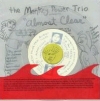 I'd never heard of the Monkey Power Trio before their latest and eighthrelease, and that may not be all that surprising. For the past eightyears, the band has met in a common location to play and record for oneday together. No live shows. No rehearsals. One day together for thepurposes of recording a seven-inch single that they will releasethemselves. They do this without any real knowledge of the instrumentsthey take into their hands even. In what may be the greatest inverse tothe theory that poor concept equals poor output, however, these popgems continue to improve with each release. The MPT honor theiroriginal gimmick fervently, insisting they will hold to it until allthe other members are dead and the sole remaining member records a soloalbum.This stuff is just too bizarre to pass up, even though the melodies andmusicianship are clearly in the amateur category. "I Love My Life" is asimple declaration with lyrics about strolling the streets of Athens,GA, and a crumhorn that won't hurt the beautiful babies, but thenregresses into simple rock chords and screams of the title. "Mike Smithis Evil," on the other hand, is a strange mellow trip into the problemof its namesake, complete with the "evil" vocal delivery and oddsynthesizer. It's juvenile, but all in good fun, and represents thefinest melody the band possesses on the release. Side B is more of thesame, with "Almost Clear" taking a few cues from scientology andexperimentalism to create a dreamlike wash, and "Systematic Problem"dissolving it all in a wash of noise and childlike banter. As it fadesout, it's reminiscent of when the PRMC would play records backward atpress conferences in order to prove satanic messages were within.
I'd never heard of the Monkey Power Trio before their latest and eighthrelease, and that may not be all that surprising. For the past eightyears, the band has met in a common location to play and record for oneday together. No live shows. No rehearsals. One day together for thepurposes of recording a seven-inch single that they will releasethemselves. They do this without any real knowledge of the instrumentsthey take into their hands even. In what may be the greatest inverse tothe theory that poor concept equals poor output, however, these popgems continue to improve with each release. The MPT honor theiroriginal gimmick fervently, insisting they will hold to it until allthe other members are dead and the sole remaining member records a soloalbum.This stuff is just too bizarre to pass up, even though the melodies andmusicianship are clearly in the amateur category. "I Love My Life" is asimple declaration with lyrics about strolling the streets of Athens,GA, and a crumhorn that won't hurt the beautiful babies, but thenregresses into simple rock chords and screams of the title. "Mike Smithis Evil," on the other hand, is a strange mellow trip into the problemof its namesake, complete with the "evil" vocal delivery and oddsynthesizer. It's juvenile, but all in good fun, and represents thefinest melody the band possesses on the release. Side B is more of thesame, with "Almost Clear" taking a few cues from scientology andexperimentalism to create a dreamlike wash, and "Systematic Problem"dissolving it all in a wash of noise and childlike banter. As it fadesout, it's reminiscent of when the PRMC would play records backward atpress conferences in order to prove satanic messages were within.samples:
 The recent hype surrounding German labels like Shitkatapult and BPitchControl has failed to implicate these labels? English brother, AIRecords, an imprint that has achieved a similar, and consistentlyexciting blend of vintage electro, house, and IDM as of late. New Townis the first AI dual-format compilation, and all-exclusive, it servesas the perfect introduction to a label whose reputation is clearly notdue to the relative obscurity of its earlier releases. The compprovides an archly fluid listen; it's an impeccably picked and pacedjourney through the AI roster. I was so involved during first listenthat I had to scan some of the gaps later to check if the disc was acontinuous mix. (It is not.) The music travels from the balls-out,trance-induced techno of Andy Freer who opens the disc, to ADJ's grittyatmospherics, to SWF's aggravated ghetto tech and back in the span ofonly a few minutes. The sounds of Detroit and vintage Warp mingle mostbeautifully in tracks by label posterboy Claro Intelecto. Intelectoappears twice in New Town, first with the eerie, Drexciyanelectro of "Delete," a song grounded by a single, oscillated, andpositively electric synth note, and next with the light, syncopatedrhythms of "Breathless," which threatens to drift into sweet oblivionif not for groaning bass underneath it all. Other tracks like Fold's"Donna Hectic" integrate unlikely machine drones into low-level,foot-stomping electro that remains thoroughly accessible; T.R.I.P.'s"Donald Plays Techno" sees cold atmospheric strains butting in on anot-so-subtle disco groove. The common thread, though, is always thesongs' emotional resonance, which suffers no shortage on New Town.While other electronic labels may rely heavily on conceptual odditiesor alien sound sources to make their records go, AI seems to have itsheart planted firmly on its sleeve. Whether or not this is due to the(somewhat) overstated influence of certain Warp artists may be open todiscussion, but this cannot detract from the simple irresistibility ofeverything included here. New Town could be the best, most soulful electronic compilation I've heard all year.
The recent hype surrounding German labels like Shitkatapult and BPitchControl has failed to implicate these labels? English brother, AIRecords, an imprint that has achieved a similar, and consistentlyexciting blend of vintage electro, house, and IDM as of late. New Townis the first AI dual-format compilation, and all-exclusive, it servesas the perfect introduction to a label whose reputation is clearly notdue to the relative obscurity of its earlier releases. The compprovides an archly fluid listen; it's an impeccably picked and pacedjourney through the AI roster. I was so involved during first listenthat I had to scan some of the gaps later to check if the disc was acontinuous mix. (It is not.) The music travels from the balls-out,trance-induced techno of Andy Freer who opens the disc, to ADJ's grittyatmospherics, to SWF's aggravated ghetto tech and back in the span ofonly a few minutes. The sounds of Detroit and vintage Warp mingle mostbeautifully in tracks by label posterboy Claro Intelecto. Intelectoappears twice in New Town, first with the eerie, Drexciyanelectro of "Delete," a song grounded by a single, oscillated, andpositively electric synth note, and next with the light, syncopatedrhythms of "Breathless," which threatens to drift into sweet oblivionif not for groaning bass underneath it all. Other tracks like Fold's"Donna Hectic" integrate unlikely machine drones into low-level,foot-stomping electro that remains thoroughly accessible; T.R.I.P.'s"Donald Plays Techno" sees cold atmospheric strains butting in on anot-so-subtle disco groove. The common thread, though, is always thesongs' emotional resonance, which suffers no shortage on New Town.While other electronic labels may rely heavily on conceptual odditiesor alien sound sources to make their records go, AI seems to have itsheart planted firmly on its sleeve. Whether or not this is due to the(somewhat) overstated influence of certain Warp artists may be open todiscussion, but this cannot detract from the simple irresistibility ofeverything included here. New Town could be the best, most soulful electronic compilation I've heard all year. samples:
- Claro Intelecto - Breathless
- ADJ - Mashup
- T.R.I.P. - Donald Plays Techno
 The new album from Laika couldn't have arrived in a more a timelymanner for me and the rest of the Boston-based fans. As I listened tothe first song, "Girl Without Hands," words from the chorus sprung out:"White snow is falling down / falls down hits the ground," as NewEngland's first snow of the season fell. Laika's fourth album, like thefirst snowfall of the season (as anybody who experiences snow knows),is beautiful, but somehow doesn't quite stick the first time.Stylistically, Whatever I Am I Am What Is Missingfalls in line with its predecessors: chunky yet elegant instrumentation(live, electronic, sampled and programmed) balanced out by Fiedler'sairy vocals and poetic lyrics. However, at ten songs, the new album ismore concise than the almost overpacked Sounds of the Satellites and more cohesive than the drifting Good Looking Blues, and this is where it truly succeeds. Overall, it also has a richer, more mature sound. The only place where Whatever I Am seems to be lacking is in the strength of its songwriting. Laika settheir own standard for brilliance in this area with tracks like"Looking for the Jackalope," "Uneasy," or "Breather," all of whichimmediately leap out even after just one listen. Only "Alphabet Soup,"with its lilting chorus even approaches being a fresh out-of-the-boxattention-grabber, while the other songs tend to fade into thebackground and get lost amongst each other. This is not to suggest thatthe songwriting is poor, but simply that there isn't as much that makesfor as compelling a listen as what Fiedler & Fixsen haveaccomplished already.
The new album from Laika couldn't have arrived in a more a timelymanner for me and the rest of the Boston-based fans. As I listened tothe first song, "Girl Without Hands," words from the chorus sprung out:"White snow is falling down / falls down hits the ground," as NewEngland's first snow of the season fell. Laika's fourth album, like thefirst snowfall of the season (as anybody who experiences snow knows),is beautiful, but somehow doesn't quite stick the first time.Stylistically, Whatever I Am I Am What Is Missingfalls in line with its predecessors: chunky yet elegant instrumentation(live, electronic, sampled and programmed) balanced out by Fiedler'sairy vocals and poetic lyrics. However, at ten songs, the new album ismore concise than the almost overpacked Sounds of the Satellites and more cohesive than the drifting Good Looking Blues, and this is where it truly succeeds. Overall, it also has a richer, more mature sound. The only place where Whatever I Am seems to be lacking is in the strength of its songwriting. Laika settheir own standard for brilliance in this area with tracks like"Looking for the Jackalope," "Uneasy," or "Breather," all of whichimmediately leap out even after just one listen. Only "Alphabet Soup,"with its lilting chorus even approaches being a fresh out-of-the-boxattention-grabber, while the other songs tend to fade into thebackground and get lost amongst each other. This is not to suggest thatthe songwriting is poor, but simply that there isn't as much that makesfor as compelling a listen as what Fiedler & Fixsen haveaccomplished already. samples:
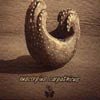 For the last five years, The Magic Carpathians Project have released ahandful of superlative but criminally ignored albums ofethno-psychedelia. The core of the group is vocalist Anna Nacher andinstrumentalist Marek Stycynski, who was the leader of the seminalPolish psychedelic-progressive rock band Atman for 25 years. TheCarpathians are augmented by a constantly revolving line-up of guestmusicians. Their sublime Ethnocoretrilogy impressed me with its haunting melodies and deep psychedelicdrones, based on cross-germinations of traditional folk of their nativePoland together with indigenous music and instruments from around theglobe. The Magic Carpathians utilize transcendental combinations ofharmonium, hurdy-gurdy, accordion, guitar, violin, sitar and Carpathianwoodwinds harmonized with more modern conceits such as vintagesynthesizers, tape loops and field recordings. Their unique hybridseems perfectly in line with the nomadic gypsy culture of Carpathia.The gypsies originated in India and traveled throughout the world,settling in the Middle East, Africa, Eastern Europe, Great Britain andSoutheast Asia, gathering disparate cultural influences along the way.The Carpathians' mindbending new album Euscorpius Carpathicusadds Outer Space to the list of regional influences, concentrating onsparse cosmic settings, atmospheric production and haunted vocals. It'sa conscious move away from the massive drones of previous releases.This is clear from the opening track "Fishyfish," a loosely improvisedassemblage of Chinese and Slovakian flutes set against the galacticripples of an EMS VCS311. The ghostly "Lavender, Satin &Gingerbread" features the fragile vocals of Anna Nacher, recallingBjork's intimate delivery on Vespertine. For "Pawpaw Girl" themulti-tracked vocals are at the fore, as a meandering bass and a forestof gentle chimes answer her plaintive intonations: "Straight to thegarden/until I find/a way below the surface/below the waterfall". "FatMoon" is the album's most evocative track, a 12-minute ambient lunarorbit featuring delicately reverberating guitars and eerie saxophonesqueals that leave vaporous trails of ectoplasm in their wake."Amp.ass" is an atonal clamor of chaotic free-jazz, assisted by thenoisy distortions of an overloaded guitar amp. The tense, forwardmomentum of "Water On the Hill" operates as an invocation to nature,cyclical layers of trancelike guitar ornamented by synthesizedbirdcalls. With Euscorpius Carpathicus, The Magic Carpathianshave expanded their already impressive musical scope even further,without losing that essential spark of creative intuition thatconsistently impregnates their music with its uniquely spectral beauty.
For the last five years, The Magic Carpathians Project have released ahandful of superlative but criminally ignored albums ofethno-psychedelia. The core of the group is vocalist Anna Nacher andinstrumentalist Marek Stycynski, who was the leader of the seminalPolish psychedelic-progressive rock band Atman for 25 years. TheCarpathians are augmented by a constantly revolving line-up of guestmusicians. Their sublime Ethnocoretrilogy impressed me with its haunting melodies and deep psychedelicdrones, based on cross-germinations of traditional folk of their nativePoland together with indigenous music and instruments from around theglobe. The Magic Carpathians utilize transcendental combinations ofharmonium, hurdy-gurdy, accordion, guitar, violin, sitar and Carpathianwoodwinds harmonized with more modern conceits such as vintagesynthesizers, tape loops and field recordings. Their unique hybridseems perfectly in line with the nomadic gypsy culture of Carpathia.The gypsies originated in India and traveled throughout the world,settling in the Middle East, Africa, Eastern Europe, Great Britain andSoutheast Asia, gathering disparate cultural influences along the way.The Carpathians' mindbending new album Euscorpius Carpathicusadds Outer Space to the list of regional influences, concentrating onsparse cosmic settings, atmospheric production and haunted vocals. It'sa conscious move away from the massive drones of previous releases.This is clear from the opening track "Fishyfish," a loosely improvisedassemblage of Chinese and Slovakian flutes set against the galacticripples of an EMS VCS311. The ghostly "Lavender, Satin &Gingerbread" features the fragile vocals of Anna Nacher, recallingBjork's intimate delivery on Vespertine. For "Pawpaw Girl" themulti-tracked vocals are at the fore, as a meandering bass and a forestof gentle chimes answer her plaintive intonations: "Straight to thegarden/until I find/a way below the surface/below the waterfall". "FatMoon" is the album's most evocative track, a 12-minute ambient lunarorbit featuring delicately reverberating guitars and eerie saxophonesqueals that leave vaporous trails of ectoplasm in their wake."Amp.ass" is an atonal clamor of chaotic free-jazz, assisted by thenoisy distortions of an overloaded guitar amp. The tense, forwardmomentum of "Water On the Hill" operates as an invocation to nature,cyclical layers of trancelike guitar ornamented by synthesizedbirdcalls. With Euscorpius Carpathicus, The Magic Carpathianshave expanded their already impressive musical scope even further,without losing that essential spark of creative intuition thatconsistently impregnates their music with its uniquely spectral beauty. samples:
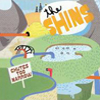 Things have changed since 2001's Oh, Inverted World. The first full-length from this group took a while to sink into my bones, but after it did, it became one of my favorite albums. Their newest full-length just isn't different enough from their first album to evoke the kind of excitement that every song did on their debut.
Things have changed since 2001's Oh, Inverted World. The first full-length from this group took a while to sink into my bones, but after it did, it became one of my favorite albums. Their newest full-length just isn't different enough from their first album to evoke the kind of excitement that every song did on their debut.
 The aquatic quality of dub rhythms is something I always attribute tothe calming effect it has on me. There's nothing better than a soupymess of beats and semi-melodies to make a rainy day feel complete.Mitek (in the CD form) has put together a compilation of thirteentracks representing thirteen different arists from Scandinavia. Themusic is subtle, pulsing, and sometimes a bit tiresome. Each artist hassomething of a distinct style about them, but there is no doubt thatthere is a similar influence riding inbetween every musician on thisdisk. Songs like "P_Process" and "Skm3" are both over six minutes inlength and both echo through space like a wet rubber band. Both songsalso happen to sound a bit too much alike and after nearly thirteenminutes of nonstop reverberations and painfully similar productionqualities, the relaxing quality begins to fade into a bright annoyancethat has me reaching to change the song almost every time. Taken alone,the individual songs are good slices of minimal beats, bass heavymelody, and sizzling atmospheres. As a whole, this compilation doesn'treally work. The album runs over an hour in length and many of thetunes are simply too abstract to be dealt with one after another. Iunderstand this is supposed to be an introduction to a label full ofelectronic bass-heads, but it needs to be listened to in pieces to besuccessful. Not everything is outstanding and not everything isterrible: there are a few great songs and a few not-so-great songs.Just don't think this can be listened to from beginning to end. Doingso will only bring frustration to the surface and spoil what mightotherwise be enjoyable.
The aquatic quality of dub rhythms is something I always attribute tothe calming effect it has on me. There's nothing better than a soupymess of beats and semi-melodies to make a rainy day feel complete.Mitek (in the CD form) has put together a compilation of thirteentracks representing thirteen different arists from Scandinavia. Themusic is subtle, pulsing, and sometimes a bit tiresome. Each artist hassomething of a distinct style about them, but there is no doubt thatthere is a similar influence riding inbetween every musician on thisdisk. Songs like "P_Process" and "Skm3" are both over six minutes inlength and both echo through space like a wet rubber band. Both songsalso happen to sound a bit too much alike and after nearly thirteenminutes of nonstop reverberations and painfully similar productionqualities, the relaxing quality begins to fade into a bright annoyancethat has me reaching to change the song almost every time. Taken alone,the individual songs are good slices of minimal beats, bass heavymelody, and sizzling atmospheres. As a whole, this compilation doesn'treally work. The album runs over an hour in length and many of thetunes are simply too abstract to be dealt with one after another. Iunderstand this is supposed to be an introduction to a label full ofelectronic bass-heads, but it needs to be listened to in pieces to besuccessful. Not everything is outstanding and not everything isterrible: there are a few great songs and a few not-so-great songs.Just don't think this can be listened to from beginning to end. Doingso will only bring frustration to the surface and spoil what mightotherwise be enjoyable. samples:
- Johan Fotmeijer - There's No Purity In Silence
- Minimalistic Sweden - Skm3
- Vita - In the Loop
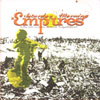 Hot on the heels of Desormais' excellent second album, Iambrokenandremake,Intr_version has released a new label sampler, making clear the label'splace as one of the premiere purveyors of pop-infused, melancholicelectronica. While there's nothing stylistically spectacular here, alltracks are exclusive, and, as is rarely the case with all-exclusivecomps, nearly all tracks are excellent. In addition to its constancy ofquality, Saturday Morning Empires also possesses a consistencyof style; nothing feels out of place. All tracks nourish a similar vibein which richly melodic instrumentation provides foundation fordelicate electronic rhythms and rivulets of warbling static. A fragilebeauty makes even the more sparse or repetitive songs instantlyappealing. The heart of the disc, a pristine four-song section of newmusic from Polmo Polpo, AMute, Loscil, and Desormais' Joshua Treble,includes the most desolate and unchanging music here, though it iseasily the best. Joshua Treble's piece is simply stunning, composed ofreverb-drenched guitar loops, beautifully layered into a holdingpattern and spaced with glitch-laden, finger-snap percussion. Witnessthe new Vini Reilly. AMute's "Aux creux des vagues mon visage" featuresa ghostly looped guitar as well, though it rides the kind of tweeelectro beat and echoed wind-chime tones that groups like Piano Magicdo so well. In fact, Saturday Morning Empires' slant is similarto that of many Rocket Girl acts: a dusty, bucolic mood suffused withenough subtle electronics to keep things magical. This compilationdiffers somewhat in that certain tracks transcend their autumnal rootsand really soar. Obvious examples are the contributions of Polmo Polpoand Tim Hecker. The former's "Dreaming (Is Real)" evolves in his uniquestyle, tested on this year's excellent Like Hearts Swelling inwhich a Neu!-influenced driving beat accelerates through panes ofdistortion as gorgeous slide guitars push everything into free-fallingheaven. Hecker is also working in his tested signature style here,creating yet another fissured landscape of static and straining drones,while sounding as fresh and at home as ever. Even seasoned listenersshould find surprises and new discoveries in Saturday Morning Empires, as much a sampler for a great label as it is a great album.
Hot on the heels of Desormais' excellent second album, Iambrokenandremake,Intr_version has released a new label sampler, making clear the label'splace as one of the premiere purveyors of pop-infused, melancholicelectronica. While there's nothing stylistically spectacular here, alltracks are exclusive, and, as is rarely the case with all-exclusivecomps, nearly all tracks are excellent. In addition to its constancy ofquality, Saturday Morning Empires also possesses a consistencyof style; nothing feels out of place. All tracks nourish a similar vibein which richly melodic instrumentation provides foundation fordelicate electronic rhythms and rivulets of warbling static. A fragilebeauty makes even the more sparse or repetitive songs instantlyappealing. The heart of the disc, a pristine four-song section of newmusic from Polmo Polpo, AMute, Loscil, and Desormais' Joshua Treble,includes the most desolate and unchanging music here, though it iseasily the best. Joshua Treble's piece is simply stunning, composed ofreverb-drenched guitar loops, beautifully layered into a holdingpattern and spaced with glitch-laden, finger-snap percussion. Witnessthe new Vini Reilly. AMute's "Aux creux des vagues mon visage" featuresa ghostly looped guitar as well, though it rides the kind of tweeelectro beat and echoed wind-chime tones that groups like Piano Magicdo so well. In fact, Saturday Morning Empires' slant is similarto that of many Rocket Girl acts: a dusty, bucolic mood suffused withenough subtle electronics to keep things magical. This compilationdiffers somewhat in that certain tracks transcend their autumnal rootsand really soar. Obvious examples are the contributions of Polmo Polpoand Tim Hecker. The former's "Dreaming (Is Real)" evolves in his uniquestyle, tested on this year's excellent Like Hearts Swelling inwhich a Neu!-influenced driving beat accelerates through panes ofdistortion as gorgeous slide guitars push everything into free-fallingheaven. Hecker is also working in his tested signature style here,creating yet another fissured landscape of static and straining drones,while sounding as fresh and at home as ever. Even seasoned listenersshould find surprises and new discoveries in Saturday Morning Empires, as much a sampler for a great label as it is a great album. samples:
- Joshua Treble - Leave Me On the Snares
- Amute - Aux Creux des Vague Mon Visage
- Palomino Falls - Bruise Coloured Blue
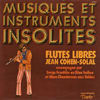 One would think the novelty market would have fortuitously unearthed all of the world's great flute masterpieces by now. Perhaps, though, there is still room in the annals for two more. In fact, the reason I even hesitate from declaring these the best two is for lack of really hearing any others. Regardless, it happened that in the early 70s, French flutist/bassist Jean Cohen-Solal recorded two largely unheard, flute-dominated records in which his seasoned psychedelic and progressive sensibility met the potent influence of avant-garde and classical ideas.
One would think the novelty market would have fortuitously unearthed all of the world's great flute masterpieces by now. Perhaps, though, there is still room in the annals for two more. In fact, the reason I even hesitate from declaring these the best two is for lack of really hearing any others. Regardless, it happened that in the early 70s, French flutist/bassist Jean Cohen-Solal recorded two largely unheard, flute-dominated records in which his seasoned psychedelic and progressive sensibility met the potent influence of avant-garde and classical ideas.
 The Swimming Pool Q's were part of the early-80's Athens scene thatspawned R.E.M. and The B-52's. Maybe it was because of their idioticband name or perhaps it was the witty sophistication of theiroff-kilter pop music, but The Swimming Pool Q's never achieved afraction of the notoriety and success experienced by their Athenscontemporaries, despite their tenure on a major label. They haven'treleased an album since 1989, and just when it seemed safe tocompletely write the band off, The Swimming Pool Q's have released Royal Academy of Reality,an ambitious and masterful concept album that makes anything from theirback catalog seem downright irrelevant. This mammoth 20-track,70-minute song cycle belongs to that rare category of rock albums thatare perfectly executed studio creations. As with The Beach Boys' Pet Sounds, Love's Forever Changes, or Todd Rundgren's A Wizard, A True Star,bandleader and producer Jeff Calder uses the studio as a canvas,elevating his compositions to the level of genius through a staggeringassortment of instruments, sound effects and overdubs. Apparently, thisalbum was 10 years in the making, which, on the surface seems absurd,until the level of detail in the richly layered musical tapestry ofeach meticulously considered track is heard. While the songwriting isoften little more than ordinary, and the lyrics are a bit overwroughtand ponderous, Jeff Calder's aspirations to the studio wizardry ofBrian Wilson, Phil Spector and Jack Nitzsche pays off brilliantly. Theconcept of Royal Academy of Reality is every bit as vague and tenuous as those of Forever Changes or Tales From Topographic Oceans—apparentlyit's got something to do with love, death, happiness and Egyptiancosmology. In the end, the concept is not what makes Royal Academya masterpiece. It's about the pure complexity of its own creation andthe seamless ebroideredy of its production: every potential millisecondof silence is filled with sound, not a moment left untouched. Calder'sinsistence on pure artifice and flawless, crisply reproducedinstruments recalls the slick perfection of Steely Dan's Katy Lied.True to form, the album opens with the sequenced synthesizer arpeggiosof "Introduction to Time," then segues into the dime-store mysticism of"Light Arriving Soon," a slightly saccharine power-pop song adrift inan oceanic symphony that includes Hammond organ, accordion, Appalachaindulcimer, Mellotron, Arp String Ensemble in addition to traditionalrock instruments and layers upon layers of harmonized, multi-trackedvocals. Perusing the liner notes, which painstakingly detail theoutrageous assortment of instruments and sound effects used in theoverdubs of each track, becomes entertaining in itself—Mini Moog, toypiano, tenor sax, congas, Waldorf Microwave, ape bone, fish, bottlecaps, Flexitone, shoe gong, etc. ad nauseum. I admire the sheeraudacity and ambition that led the Q's to record an album so out ofstep with its times. In this era of stripped-down garage rock andPowerbook pop, Jeff Calder and company have made an album whichgloriously resurrects the progressive chamber-pop of the 70's. A few ofthe tracks stand out from the others—the epic sound effects suite of"The Discovery of Dawn" or the sad refrain of "The Radio inMemphis"—but most of these songs just blend seamlessly into a byzantinewhole, like movements of a vast concerto. I am certain that most willfind Royal Academy of Reality to be hopelessly outmoded and convoluted, but I stand in awe of its multifaceted, meticulous brilliance.
The Swimming Pool Q's were part of the early-80's Athens scene thatspawned R.E.M. and The B-52's. Maybe it was because of their idioticband name or perhaps it was the witty sophistication of theiroff-kilter pop music, but The Swimming Pool Q's never achieved afraction of the notoriety and success experienced by their Athenscontemporaries, despite their tenure on a major label. They haven'treleased an album since 1989, and just when it seemed safe tocompletely write the band off, The Swimming Pool Q's have released Royal Academy of Reality,an ambitious and masterful concept album that makes anything from theirback catalog seem downright irrelevant. This mammoth 20-track,70-minute song cycle belongs to that rare category of rock albums thatare perfectly executed studio creations. As with The Beach Boys' Pet Sounds, Love's Forever Changes, or Todd Rundgren's A Wizard, A True Star,bandleader and producer Jeff Calder uses the studio as a canvas,elevating his compositions to the level of genius through a staggeringassortment of instruments, sound effects and overdubs. Apparently, thisalbum was 10 years in the making, which, on the surface seems absurd,until the level of detail in the richly layered musical tapestry ofeach meticulously considered track is heard. While the songwriting isoften little more than ordinary, and the lyrics are a bit overwroughtand ponderous, Jeff Calder's aspirations to the studio wizardry ofBrian Wilson, Phil Spector and Jack Nitzsche pays off brilliantly. Theconcept of Royal Academy of Reality is every bit as vague and tenuous as those of Forever Changes or Tales From Topographic Oceans—apparentlyit's got something to do with love, death, happiness and Egyptiancosmology. In the end, the concept is not what makes Royal Academya masterpiece. It's about the pure complexity of its own creation andthe seamless ebroideredy of its production: every potential millisecondof silence is filled with sound, not a moment left untouched. Calder'sinsistence on pure artifice and flawless, crisply reproducedinstruments recalls the slick perfection of Steely Dan's Katy Lied.True to form, the album opens with the sequenced synthesizer arpeggiosof "Introduction to Time," then segues into the dime-store mysticism of"Light Arriving Soon," a slightly saccharine power-pop song adrift inan oceanic symphony that includes Hammond organ, accordion, Appalachaindulcimer, Mellotron, Arp String Ensemble in addition to traditionalrock instruments and layers upon layers of harmonized, multi-trackedvocals. Perusing the liner notes, which painstakingly detail theoutrageous assortment of instruments and sound effects used in theoverdubs of each track, becomes entertaining in itself—Mini Moog, toypiano, tenor sax, congas, Waldorf Microwave, ape bone, fish, bottlecaps, Flexitone, shoe gong, etc. ad nauseum. I admire the sheeraudacity and ambition that led the Q's to record an album so out ofstep with its times. In this era of stripped-down garage rock andPowerbook pop, Jeff Calder and company have made an album whichgloriously resurrects the progressive chamber-pop of the 70's. A few ofthe tracks stand out from the others—the epic sound effects suite of"The Discovery of Dawn" or the sad refrain of "The Radio inMemphis"—but most of these songs just blend seamlessly into a byzantinewhole, like movements of a vast concerto. I am certain that most willfind Royal Academy of Reality to be hopelessly outmoded and convoluted, but I stand in awe of its multifaceted, meticulous brilliance. samples:
 As music these days seems to perpetually mine the past for ideas ratherthan develop new ones, the notion of an Acid Revival or Renaissance hasstarted to emerge. As someone with a real background in the glory daysof rave culture and acid house, you'd expect new material from LukeVibert touted as Acid to be innovative yet deeply rooted in the historyof the music. Instead, YosepH,oddly enough his first album ever for Warp, is a journey far away fromthe dancefloor to a rather deep place somewhere inside Vibert's rectum.While many producers are rediscovering the power of the TB-303 in theirclub-oriented tracks, the thirteen songs presented here are largelynoodly, downtempo, and less than impressive. For roughly half thealbum, we are treated to forgetable throwaway cuts like "StanD'Infamy", "Harmonic" and "Slowfast." The other half are listenable,but equally unremarkable. "Synthax" would have some potential if thebeat were chunkier and the tempo doubled a la his recent work as AmenAndrews on Rephlex. The somewhat dubby "Freak Time Baby" consists of asteady groove with echoed synth stabs and a pointless vocal. There area few places on the CD where Vibert's formula seems to work enough towarrant a second listen. The first single "I Love Acid" stands outamong the bunch with a super catchy vocoded hook and bubbling bassline."Countdown" throws together two-step garage with 303 trickery for afunky result that deserved to be fleshed on more on this album. YosepHhad some real potential here, and Warp had a good chance to come out ontop with the first high-profile, high quality Acid album in years.Instead, we're left with an overhyped release of less than stellarsounds from a label perhaps past its prime in terms of relevance. Let'shope someone else gets this Acid Renaissance right so that YosepH is not the last word on the matter.
As music these days seems to perpetually mine the past for ideas ratherthan develop new ones, the notion of an Acid Revival or Renaissance hasstarted to emerge. As someone with a real background in the glory daysof rave culture and acid house, you'd expect new material from LukeVibert touted as Acid to be innovative yet deeply rooted in the historyof the music. Instead, YosepH,oddly enough his first album ever for Warp, is a journey far away fromthe dancefloor to a rather deep place somewhere inside Vibert's rectum.While many producers are rediscovering the power of the TB-303 in theirclub-oriented tracks, the thirteen songs presented here are largelynoodly, downtempo, and less than impressive. For roughly half thealbum, we are treated to forgetable throwaway cuts like "StanD'Infamy", "Harmonic" and "Slowfast." The other half are listenable,but equally unremarkable. "Synthax" would have some potential if thebeat were chunkier and the tempo doubled a la his recent work as AmenAndrews on Rephlex. The somewhat dubby "Freak Time Baby" consists of asteady groove with echoed synth stabs and a pointless vocal. There area few places on the CD where Vibert's formula seems to work enough towarrant a second listen. The first single "I Love Acid" stands outamong the bunch with a super catchy vocoded hook and bubbling bassline."Countdown" throws together two-step garage with 303 trickery for afunky result that deserved to be fleshed on more on this album. YosepHhad some real potential here, and Warp had a good chance to come out ontop with the first high-profile, high quality Acid album in years.Instead, we're left with an overhyped release of less than stellarsounds from a label perhaps past its prime in terms of relevance. Let'shope someone else gets this Acid Renaissance right so that YosepH is not the last word on the matter. samples:
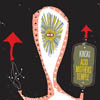 Kinski's Sub Pop debut Airs Above Your Stationis perhaps one of the most exciting records released this year. Therawkus sound and melodic variety, while not uncommon, is amazing tohear when done right. The group is firm in their powerful rock positionbut they have not lost sight of their modern psych and space rockconnections, basically the crowd which embraced them before anybodyelse. What's presented here is four songs: one each by Kinski and AcidMothers and two featuring both entities together. It's presented as asingle CD or a double vinyl set, with the attempts to weigh eachmember's contributions equally. The result, timewise, is unfortunatelyweighed heavily in AMT's favor. Kinski's tribute to Anne Heche, "FellAsleep On Your Lawn" gets things going and is an excellent tune forfans of their album. It's a 10+ minute demonstration of some boldguitar riffage and thunderous drumwork, both opening and closing onappropriate delicate moods. The two centerpieces of the release aredrum free excursions into the otherworldly. "It's Nice to Hear YourVoice" begins the collaborative work and its foundations are clearlymore Kinski than Acid Mothers: it's got a forward motion andprogressively builds momentum over the course of another 10+ minutes,accented with tablas and hypnotic, dreamlike effects which are notforeign to the Acid Mothers sound. After this point, however, theMothers take over with their initiated tracks, which, very similar to alot of Mothers material is meandering, wistful, and colored by drones,theremin-imitating synths, and bit of aimless noodling. While I realizethere may be a good number of hardcore AMT fans probably reading this,I have to step in and say that their music is becoming a bit too samey.(Even the title, "Planet Crazy Gold," seems all too predictable.) Atleast this number has a bit of Kinski left, probably providing theunderscoring bass pulses while the vocables twitter in the ether. At13+ minutes, it goes on way too long. Thankfully somebody got up fromtheir seat at some point to fade it out! (God I thought that wouldnever end! But much to my dismay, things got worse.) Thevertigo-influecing "Virginal Plane 5:23" closes the album with anotherbeast of absent harmonic motion, now provided by a psych rock guitarriff repeated ad nauseam. Once again, it's got echoing synth twitterswhich fade into a distorted mess, and sounds of wordless vocals. It'salso painfully accompanied by an overdose of blistering wanky guitarand cheap left-to-right panning effects which border on the completelyunlistenable. It continues on and on and on, progressively gettingworse. The five-minute mark comes and goes with absolutely no sensethat I'm anywhere different from where this song started. I'm remindedhow a "crescendo in volume" shouldn't take precedent over a thoughtfuldevelopment of melody and structure over time (anybody in a rock bandthat like to make similar music should take note). By about the eighthminute I'm sitting here wondering if anybody playing is actuallylistening to each other or just playing as loud as they can. Listeningbecomes laborious. 12 minutes go by, please make them stop! Am I theonly one thinking AMT just record all practice jam-sessions and decideto release them? 14 minutes pass and this album now becomes a test ofstamina. Had this been a concert, I would have been in the car and longgone by now. 15 minutes pass and it doesn't even sound like theoriginal guitarist and drummer who opened up the track care any more.18 minutes have elapsed, now this is just becoming sad. I need to takea break but I just can't. Something must happen right? The 20 minutemark comes and goes, as my stomach is now feeling the funk. Speaking ofFunk, Funkadelic did this over 30 years ago with "Free Your Mind AndYour Ass Will Follow," however they had the assistance of vocals andthe decency to end it before 10 minutes. After 22 minutes, theprominent opening two-bar guitar riff becomes prominent again.Hopefully this is a sign of things coming to a close. It doesn't happenuntil 26 minutes and proverbial mishmosh of complete noise and I'm leftfeeling the same as coming from a disappointing movie: more concernedabout the time in my life that I'll never get back than the moneyspent. It is such a disappointing end to a release which began with somuch hope.
Kinski's Sub Pop debut Airs Above Your Stationis perhaps one of the most exciting records released this year. Therawkus sound and melodic variety, while not uncommon, is amazing tohear when done right. The group is firm in their powerful rock positionbut they have not lost sight of their modern psych and space rockconnections, basically the crowd which embraced them before anybodyelse. What's presented here is four songs: one each by Kinski and AcidMothers and two featuring both entities together. It's presented as asingle CD or a double vinyl set, with the attempts to weigh eachmember's contributions equally. The result, timewise, is unfortunatelyweighed heavily in AMT's favor. Kinski's tribute to Anne Heche, "FellAsleep On Your Lawn" gets things going and is an excellent tune forfans of their album. It's a 10+ minute demonstration of some boldguitar riffage and thunderous drumwork, both opening and closing onappropriate delicate moods. The two centerpieces of the release aredrum free excursions into the otherworldly. "It's Nice to Hear YourVoice" begins the collaborative work and its foundations are clearlymore Kinski than Acid Mothers: it's got a forward motion andprogressively builds momentum over the course of another 10+ minutes,accented with tablas and hypnotic, dreamlike effects which are notforeign to the Acid Mothers sound. After this point, however, theMothers take over with their initiated tracks, which, very similar to alot of Mothers material is meandering, wistful, and colored by drones,theremin-imitating synths, and bit of aimless noodling. While I realizethere may be a good number of hardcore AMT fans probably reading this,I have to step in and say that their music is becoming a bit too samey.(Even the title, "Planet Crazy Gold," seems all too predictable.) Atleast this number has a bit of Kinski left, probably providing theunderscoring bass pulses while the vocables twitter in the ether. At13+ minutes, it goes on way too long. Thankfully somebody got up fromtheir seat at some point to fade it out! (God I thought that wouldnever end! But much to my dismay, things got worse.) Thevertigo-influecing "Virginal Plane 5:23" closes the album with anotherbeast of absent harmonic motion, now provided by a psych rock guitarriff repeated ad nauseam. Once again, it's got echoing synth twitterswhich fade into a distorted mess, and sounds of wordless vocals. It'salso painfully accompanied by an overdose of blistering wanky guitarand cheap left-to-right panning effects which border on the completelyunlistenable. It continues on and on and on, progressively gettingworse. The five-minute mark comes and goes with absolutely no sensethat I'm anywhere different from where this song started. I'm remindedhow a "crescendo in volume" shouldn't take precedent over a thoughtfuldevelopment of melody and structure over time (anybody in a rock bandthat like to make similar music should take note). By about the eighthminute I'm sitting here wondering if anybody playing is actuallylistening to each other or just playing as loud as they can. Listeningbecomes laborious. 12 minutes go by, please make them stop! Am I theonly one thinking AMT just record all practice jam-sessions and decideto release them? 14 minutes pass and this album now becomes a test ofstamina. Had this been a concert, I would have been in the car and longgone by now. 15 minutes pass and it doesn't even sound like theoriginal guitarist and drummer who opened up the track care any more.18 minutes have elapsed, now this is just becoming sad. I need to takea break but I just can't. Something must happen right? The 20 minutemark comes and goes, as my stomach is now feeling the funk. Speaking ofFunk, Funkadelic did this over 30 years ago with "Free Your Mind AndYour Ass Will Follow," however they had the assistance of vocals andthe decency to end it before 10 minutes. After 22 minutes, theprominent opening two-bar guitar riff becomes prominent again.Hopefully this is a sign of things coming to a close. It doesn't happenuntil 26 minutes and proverbial mishmosh of complete noise and I'm leftfeeling the same as coming from a disappointing movie: more concernedabout the time in my life that I'll never get back than the moneyspent. It is such a disappointing end to a release which began with somuch hope. samples:
After a decade of producing the underground's most radical audio surrealism and twisted sonic mutations, Nurse With Wound unleashed Soliloquy for Lilith onto an unsuspecting public. This triple album of understated electronic drones was miles away from the unhinged kitchen-sink sound sculptures that Nurse With Wound fans had come to expect. Lilith was Stapleton's version of Metal Machine Music, Lou Reed's double album of electronic drones that perplexed a public weaned on the introspective rock of previous work. Just as many did following the release of Metal Machine Music, several critics maintained (and still maintain) that Soliloquy for Lilith was Nurse With Wound's finest accomplishment. I can't have the been the only person who was a bit incredulous about these hyperbolic accolades.
My first reaction to the album was lukewarm. While the material was certainly potent and had a fragile beauty all its own, it couldn't match the unparalleled dynamism of Spiral Insana or the sinister whimsy of Homotopy to Marie. In short, I probably felt as betrayed and confused as the legions of rock kids who bought Reed's Metal Machine Music, dropped the tone arm and made the disheartening discovery that the album was nothing but four sides of grating, atonal noise. Although this kind of experimentalism should perhaps have been more foreseeable coming from the Stapleton camp, I think few were prepared for a Nurse so positively civilized, academic and downright pastoral. Now comes the United Dairies re-release of this, his most confounding work. The album has been re-issued and digitally re-mastered, and comes packaged in a nice box mirroring the original LP artwork. Just to make it completely irresistible, a third disc containing two new pieces recorded in the same method and spirit as the original Lilith pieces is also included. Listening to these sounds again after several intervening years of expanding my own musical education is quite a revelation, and I think that I never truly gave this album a fair chance. Understanding this album as Stapleton's take on the groundbreaking minimalist drone work of LaMonte Young and Charlemagne Palestine gives essential perspective on Stapleton's unique developments.
Soliloquy for Lilith is an album of complex, powerfully realized moods, both somber and fragile; one of the most rewarding "ambient" albums ever made. It was recorded to take advantage of the strange electrical phenomena that occurred when Stapleton discovered ghostly feedback tones emitted from a spiderweb of cross-patched guitar pedals that would elicit varying tones in response to physical movement in the vicinity of the patchwork, much the same way a theremin is played. This fortuitous accident is utilized to stunning effect on the eight sidelong pieces that comprise the album. Giant sheaves of majestic, glacial sound are wielded in repetition, with the inevitable effects of sound decay and distortion creeping in at the high end and bottom tones. It's a gleaming sound full of depth and dimension, like a work of modern metal sculpture in which you can see your distorted reflection. When given your full attention, the coldly warm tones have the effect of rendering thoughts, and therefore time itself, neutral. The same sound palette is used throughout, but each track manages to be very different from the last, birthing its own unique phantasms. The two new pieces are very much in the same vein as the original six, but are perhaps slightly more dynamic than the others. Either way, they're all extraordinarily subtle and stirring works. Soliloquy for Lilith works on its own terms, and it certainly stands the test of time as one of Steven Stapleton's most transcendental experiments.
samples:
 Last week when I was in Tokyo, I hit up on record stores with a list ofJapanese punk and indie bands and asked the staff in bad Japanese ifthey had any albums by these bands. After they found (or in most cases,didn't find) some of the bands, I'd ask them if they could recommendany bands based on my tastes. Everything recommended to me was great,but one release that I picked up in Shibuya was pure gold. The releaseis the unfortunately short but awesomely rocking Lostage. They onlyhave this three-song CD out right now, but it's on par with the bestmusic put out by Fugazi and June of 44. Hooks reminiscent of My BloodyValentine weave in and out of stop-n-go bass and drums, whilesinger/bass-player Takahisa Gomi's smooth voice belts out Japaneselyrics on the "Routine," the opener. On "Gatsuta," the hard guitar workof Masaya Shimizu and Takuto Gomi is remeniscent of Bedhead's"Psychosomatica," (the hard rockin one on Transaction de Novo).The closing third track, "2:18," once again returns to melodic hooksand a terrific stop-n-go beat, and has an aching longing quality to thefinal refrains that gives me the musical chills. And lest we forget,Tomokazu Tanaka's strong drumming keeps this whole enterprise together.This EP is truly a diamond amongst the gems I brought back from Japan.If you see a copy of this, for the love of God, knock down the personin front of you and grab it! Lostage's website is at http://music.lacrymosa.com/lostage. Most of it is in English, but you might have to use babel on some of it.
Last week when I was in Tokyo, I hit up on record stores with a list ofJapanese punk and indie bands and asked the staff in bad Japanese ifthey had any albums by these bands. After they found (or in most cases,didn't find) some of the bands, I'd ask them if they could recommendany bands based on my tastes. Everything recommended to me was great,but one release that I picked up in Shibuya was pure gold. The releaseis the unfortunately short but awesomely rocking Lostage. They onlyhave this three-song CD out right now, but it's on par with the bestmusic put out by Fugazi and June of 44. Hooks reminiscent of My BloodyValentine weave in and out of stop-n-go bass and drums, whilesinger/bass-player Takahisa Gomi's smooth voice belts out Japaneselyrics on the "Routine," the opener. On "Gatsuta," the hard guitar workof Masaya Shimizu and Takuto Gomi is remeniscent of Bedhead's"Psychosomatica," (the hard rockin one on Transaction de Novo).The closing third track, "2:18," once again returns to melodic hooksand a terrific stop-n-go beat, and has an aching longing quality to thefinal refrains that gives me the musical chills. And lest we forget,Tomokazu Tanaka's strong drumming keeps this whole enterprise together.This EP is truly a diamond amongst the gems I brought back from Japan.If you see a copy of this, for the love of God, knock down the personin front of you and grab it! Lostage's website is at http://music.lacrymosa.com/lostage. Most of it is in English, but you might have to use babel on some of it. samples:
 The tenth release in Konkurrent's In the Fishtank series sees the horn section of jazzy post-rockers Jaga Jazzist paired up with fellow Norwegians Motorpsycho. This Fishtankdiffers slightly from others past in that the bands had a significantlyinvolved relationship before the session was even proposed. Bandmembers have floated freely between the two acts, and both were set toplay a festival together in Holland at the time Konkurrentpropositioned them for collaboration. Such previous involvement,combined with an unprecedented amount of rehearsal time has resulted inthe first Fishtank with a fully integrated and time-craftedsound. The rough edges and obtuse proportions that made previouscollaborations sometimes fun, and more often forgettable, are missinghere. The Jaga horns lend a spacious fragility to Motorpsycho's burly,often blues-laden psych, but in a thoroughly accommodating fashion.True, the latter had been heading towards looser, kraut-ier pastures asof late, but with a horn section now on equal footing, Motorpsychofreely indulge in their Neu!-ish tendencies. Fears that anotherjazz-infected Fishtank might go the way of wankery (see therecent Sonic Youth + I.C.P + The Ex collaboration) can be dismissed, asnothing short of careful, studied fusion is achieved here. Fusion isthe only name for tracks like "Doffen Ah Um," with a groove seductiveenough to justify the title's Mingus reference. The bulk of this Fishtank,however, offers a less-boisterous blend with the most successful tracksserving as bookends on the disc. "Bombay Brassiere" and the 20-minutecloser "Tristano," showcase Motorpsycho's talent for dense, drivingpsych, made crystalline by a layering of horn and flute lines thatbring both tracks to dazzling crescendos, bursting with temperedimprovisation. Other portions of the disc are less appealing, such asthe stiff, white-boy funk put to a version of the Art Ensemble ofChicago classic "Theme de Yoyo." On "Pills, Powders and Passion Plays,"Motorpsycho's Bent Saether contributes his musty, damaged vocals, whichmay sound fine over that band's acid-headed rock, but make a PhilCollins tune of this slow jam.This disc has plenty of moments sure to please fans of both bands,though newcomers could do better with either of the Jaga Jazzist fulllengths on Ninja Tune.
The tenth release in Konkurrent's In the Fishtank series sees the horn section of jazzy post-rockers Jaga Jazzist paired up with fellow Norwegians Motorpsycho. This Fishtankdiffers slightly from others past in that the bands had a significantlyinvolved relationship before the session was even proposed. Bandmembers have floated freely between the two acts, and both were set toplay a festival together in Holland at the time Konkurrentpropositioned them for collaboration. Such previous involvement,combined with an unprecedented amount of rehearsal time has resulted inthe first Fishtank with a fully integrated and time-craftedsound. The rough edges and obtuse proportions that made previouscollaborations sometimes fun, and more often forgettable, are missinghere. The Jaga horns lend a spacious fragility to Motorpsycho's burly,often blues-laden psych, but in a thoroughly accommodating fashion.True, the latter had been heading towards looser, kraut-ier pastures asof late, but with a horn section now on equal footing, Motorpsychofreely indulge in their Neu!-ish tendencies. Fears that anotherjazz-infected Fishtank might go the way of wankery (see therecent Sonic Youth + I.C.P + The Ex collaboration) can be dismissed, asnothing short of careful, studied fusion is achieved here. Fusion isthe only name for tracks like "Doffen Ah Um," with a groove seductiveenough to justify the title's Mingus reference. The bulk of this Fishtank,however, offers a less-boisterous blend with the most successful tracksserving as bookends on the disc. "Bombay Brassiere" and the 20-minutecloser "Tristano," showcase Motorpsycho's talent for dense, drivingpsych, made crystalline by a layering of horn and flute lines thatbring both tracks to dazzling crescendos, bursting with temperedimprovisation. Other portions of the disc are less appealing, such asthe stiff, white-boy funk put to a version of the Art Ensemble ofChicago classic "Theme de Yoyo." On "Pills, Powders and Passion Plays,"Motorpsycho's Bent Saether contributes his musty, damaged vocals, whichmay sound fine over that band's acid-headed rock, but make a PhilCollins tune of this slow jam.This disc has plenty of moments sure to please fans of both bands,though newcomers could do better with either of the Jaga Jazzist fulllengths on Ninja Tune.samples:
 Breaking beer bottles and initiating fights may be the best thing to dowhile listening to these destructive twenty minutes. Sloppy guitars andthe best use of a saxophone in such an energy-driven band propel thismusic into the realm of motorcycles, leather, and (strangely) girls inthose cute skirts that were popular during the 18's. Throw in a bit ofhumor and a taste for the obscene and what emerges is this brazen riotof sleaze. "The Nasty Show" is exactly what it sounds like: ahip-shaking melody is accentuated by a kick-ass sax lead before thevocalist decides that it's time to let his wavy voice puncture the airwith a slew of female background vocalists. The only downside to thefirst track is that the vocals are... well... a bit funny. At firstthis turned me off and then after a couple listens the humor and cheeseof it all just sank in somehow. "I want to fucking die for you / I wantto die fucking you / Fucking the day away / Why don't you come over andplay?" might look stupid on paper and certainly it sounds cheesey whenrecorded, but after awhile the raunch settles in nicely and there'snothing left to do but dance like a crazy drunk. Pink Grease is,without a doubt, indebted to some bands flying out of the past, buttheir combo of keyboard sounds, sax, guitars, and drums somehowelevates itself over the influences it draws from and leaves only the fun elements squarely in place. The helter-skelter vocals of "Susie" and the overall shakey ground that all of All Over Yourests upon keeps things interesting. Wearing a leather jacket may berequired for listening to this album, though. And switchblades must becarried in every man's pocket. Girls: wear those short skirts andfluffy sweaters and dance around as if you had no idea that any boymight wonder what's under your clothes. Pink Grease have written anasty little EP of near total expenditure; sexual, heavy, andhilarious.
Breaking beer bottles and initiating fights may be the best thing to dowhile listening to these destructive twenty minutes. Sloppy guitars andthe best use of a saxophone in such an energy-driven band propel thismusic into the realm of motorcycles, leather, and (strangely) girls inthose cute skirts that were popular during the 18's. Throw in a bit ofhumor and a taste for the obscene and what emerges is this brazen riotof sleaze. "The Nasty Show" is exactly what it sounds like: ahip-shaking melody is accentuated by a kick-ass sax lead before thevocalist decides that it's time to let his wavy voice puncture the airwith a slew of female background vocalists. The only downside to thefirst track is that the vocals are... well... a bit funny. At firstthis turned me off and then after a couple listens the humor and cheeseof it all just sank in somehow. "I want to fucking die for you / I wantto die fucking you / Fucking the day away / Why don't you come over andplay?" might look stupid on paper and certainly it sounds cheesey whenrecorded, but after awhile the raunch settles in nicely and there'snothing left to do but dance like a crazy drunk. Pink Grease is,without a doubt, indebted to some bands flying out of the past, buttheir combo of keyboard sounds, sax, guitars, and drums somehowelevates itself over the influences it draws from and leaves only the fun elements squarely in place. The helter-skelter vocals of "Susie" and the overall shakey ground that all of All Over Yourests upon keeps things interesting. Wearing a leather jacket may berequired for listening to this album, though. And switchblades must becarried in every man's pocket. Girls: wear those short skirts andfluffy sweaters and dance around as if you had no idea that any boymight wonder what's under your clothes. Pink Grease have written anasty little EP of near total expenditure; sexual, heavy, andhilarious.samples:
 Basil Kirchin released two landmark works of musique concrête in the early 1970's entitled Worlds Within Worlds,then disappeared from the face of the earth. I've never heard theseearly classics as they've remained hopelessly out of print for thirtyyears, even as such music luminaries as Drew Daniel (of Matmos and TheSoft Pink Truth) gushed that Kirchin's works were "immersive, dark andmagical." Trunk Records does the next best thing to a re-issue with Quantum, a previously unreleased full-length album recorded during the same time period as the pieces on Worlds Within Worlds.Kirchin's peculiar genius lies in his effortless juxtapositions andmutations of sampled environments, free jazz skronk, unexpected vocalsamples and subtle electronic harmonies. Quantum is a uniquelyenthralling journey through microtonal events - creating rich, deeplycaptivating ecosystems of sound. The power of Quantum holds up next to classic concrete works such as Tod Dockstader's Apocalypse and Roger Doyle's Rapid Eye Movements."Part One" begins with field recordings of squawking geese togetherwith the lovely melodic swells of a synthesized organ. The voice of awoman, possibly Kirchin's wife, intones in a breathy, rapturouswhisper: "No one can find me or see my face, but I am there. You waitand see. Something special will come from me." The geese return, butthey have been slowed down and mutated, dripping like ghostly treacleas the quartet of avant-jazz improvisers take prominence. It is herethat Kirchin unveils his affinity for time-stretching - slowing downsound sources to highlight spectral microcosms that lie unpotentiatedon the surface of environmental sounds. This was certainly an importantforerunner to the object-sampling strategies of Matmos, who use newertechnologies to underscore the same kind of audio minutiae. ThoughKirchin seems to consider his quartet of improvisers as just anothersound event to be amplified, faded, mutated and re-assembled, theplaying itself is fantastic - fiery, dynamic and emotive. There are noalbum credits, but research reveals the skeletal guitar improvisationsto be the work of Derek Bailey, and the other players should berecognizable to British improv enthusiasts. "Part Two" uses the samesound sources as the first, but adds incredibly disarming audio samplesof autistic children. Their primitive, pre-verbal ululations hold astrange magic in this context. Part of the fascination of Quantumis discovering just how similar the bleats of a tenor sax are to themutterings of geese, how a vibraphone and a guitar can have a strangedialogue against a backdrop of a human voice, pitched and distorted tosound like the roar of a lion. Quantum creates an innovativeenvironment in which the mind is freed to make surprising connections,building its own neural pathways to navigate this dark, undiscoveredworld of quantum changes.
Basil Kirchin released two landmark works of musique concrête in the early 1970's entitled Worlds Within Worlds,then disappeared from the face of the earth. I've never heard theseearly classics as they've remained hopelessly out of print for thirtyyears, even as such music luminaries as Drew Daniel (of Matmos and TheSoft Pink Truth) gushed that Kirchin's works were "immersive, dark andmagical." Trunk Records does the next best thing to a re-issue with Quantum, a previously unreleased full-length album recorded during the same time period as the pieces on Worlds Within Worlds.Kirchin's peculiar genius lies in his effortless juxtapositions andmutations of sampled environments, free jazz skronk, unexpected vocalsamples and subtle electronic harmonies. Quantum is a uniquelyenthralling journey through microtonal events - creating rich, deeplycaptivating ecosystems of sound. The power of Quantum holds up next to classic concrete works such as Tod Dockstader's Apocalypse and Roger Doyle's Rapid Eye Movements."Part One" begins with field recordings of squawking geese togetherwith the lovely melodic swells of a synthesized organ. The voice of awoman, possibly Kirchin's wife, intones in a breathy, rapturouswhisper: "No one can find me or see my face, but I am there. You waitand see. Something special will come from me." The geese return, butthey have been slowed down and mutated, dripping like ghostly treacleas the quartet of avant-jazz improvisers take prominence. It is herethat Kirchin unveils his affinity for time-stretching - slowing downsound sources to highlight spectral microcosms that lie unpotentiatedon the surface of environmental sounds. This was certainly an importantforerunner to the object-sampling strategies of Matmos, who use newertechnologies to underscore the same kind of audio minutiae. ThoughKirchin seems to consider his quartet of improvisers as just anothersound event to be amplified, faded, mutated and re-assembled, theplaying itself is fantastic - fiery, dynamic and emotive. There are noalbum credits, but research reveals the skeletal guitar improvisationsto be the work of Derek Bailey, and the other players should berecognizable to British improv enthusiasts. "Part Two" uses the samesound sources as the first, but adds incredibly disarming audio samplesof autistic children. Their primitive, pre-verbal ululations hold astrange magic in this context. Part of the fascination of Quantumis discovering just how similar the bleats of a tenor sax are to themutterings of geese, how a vibraphone and a guitar can have a strangedialogue against a backdrop of a human voice, pitched and distorted tosound like the roar of a lion. Quantum creates an innovativeenvironment in which the mind is freed to make surprising connections,building its own neural pathways to navigate this dark, undiscoveredworld of quantum changes.samples:
 The real tragedy of the obligatory Fahey reference accompanying everysort of instrumental guitar music criticism these days is that in acase like this, when a namedrop is relevant, even downright essential,one feels like chump or a short-cutter for following through with it.With this debut disc, Harris Newman joins label-mate SteffenBasho-Junghans as the second new guitar graduate to successfully minethe Takoma catalog and produce something that is as fresh as it isbackward-looking. The first third of Non-sequiturs had me thinking Ihad slipped The Best of John Fahey into the changer by mistake. Newmanattacks Fahey's windswept blues and teetering, fingerpicked flourisheswith a tenacity and a passion that keeps the songs from falling intodull repetition. The melancholia-meets-agitation vibe present in muchof Fahey's music is at work in Newman's melodic sense and his play oftension and release; songs like "Sometimes a Bad Attitude is All itTakes" and "The Bullheaded Stranger" match Fahey's early works both intheir ambitious structure and their quasi-absurd titles. Non-sequiturswould not be such a pleasing listen, though, if Newman had not lentthem his unique touch. The guitarist's activity in the Montreal avantscene has no doubt inspired some of the disc's more surprising moments,most notably those featuring percussion from Godspeed member BruceCawdron. Cawdron's playing proves versatile, blending with theshuffling blues early on the disc and providing more abstractaccompaniment via pandeiro, bodhran, and exquisitely played bowedcymbals as Newman's playing gets more spacious. The guitar bottoms outon "God is in the Details," gathering a skeletal, glacier-paced bluesfrom groaning lap-steel plucking atop ghostly cymbal drones. Thepercussion is considerably detached in the mix for the length ofNon-sequiturs giving a surreal quality to certain sections, primarilythose in which Newman introduces improvisation or a kind of raga-styleabandon into his playing. This effect is most impressive on the disc's15-minute climax, "Forest for the Trees." The track features Newmandrifting uncomfortably over three somber chords as the drums bump andshake, back and forth against his nervous timing; as his playingdecays, the percussion ascends in a clatter of protest. The imageconjured is one of an anxious guitar player, playing to the creakingsounds in his room at night. One quality often lacking among thefollowers of Fahey (of which Newman is one of the most loyal) is theability to transcend technical mastery and create truly soulful,evocative music. Non-sequiturs confirms Harris Newman an exception tothis majority.
The real tragedy of the obligatory Fahey reference accompanying everysort of instrumental guitar music criticism these days is that in acase like this, when a namedrop is relevant, even downright essential,one feels like chump or a short-cutter for following through with it.With this debut disc, Harris Newman joins label-mate SteffenBasho-Junghans as the second new guitar graduate to successfully minethe Takoma catalog and produce something that is as fresh as it isbackward-looking. The first third of Non-sequiturs had me thinking Ihad slipped The Best of John Fahey into the changer by mistake. Newmanattacks Fahey's windswept blues and teetering, fingerpicked flourisheswith a tenacity and a passion that keeps the songs from falling intodull repetition. The melancholia-meets-agitation vibe present in muchof Fahey's music is at work in Newman's melodic sense and his play oftension and release; songs like "Sometimes a Bad Attitude is All itTakes" and "The Bullheaded Stranger" match Fahey's early works both intheir ambitious structure and their quasi-absurd titles. Non-sequiturswould not be such a pleasing listen, though, if Newman had not lentthem his unique touch. The guitarist's activity in the Montreal avantscene has no doubt inspired some of the disc's more surprising moments,most notably those featuring percussion from Godspeed member BruceCawdron. Cawdron's playing proves versatile, blending with theshuffling blues early on the disc and providing more abstractaccompaniment via pandeiro, bodhran, and exquisitely played bowedcymbals as Newman's playing gets more spacious. The guitar bottoms outon "God is in the Details," gathering a skeletal, glacier-paced bluesfrom groaning lap-steel plucking atop ghostly cymbal drones. Thepercussion is considerably detached in the mix for the length ofNon-sequiturs giving a surreal quality to certain sections, primarilythose in which Newman introduces improvisation or a kind of raga-styleabandon into his playing. This effect is most impressive on the disc's15-minute climax, "Forest for the Trees." The track features Newmandrifting uncomfortably over three somber chords as the drums bump andshake, back and forth against his nervous timing; as his playingdecays, the percussion ascends in a clatter of protest. The imageconjured is one of an anxious guitar player, playing to the creakingsounds in his room at night. One quality often lacking among thefollowers of Fahey (of which Newman is one of the most loyal) is theability to transcend technical mastery and create truly soulful,evocative music. Non-sequiturs confirms Harris Newman an exception tothis majority.samples:




